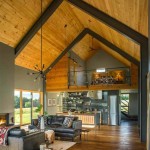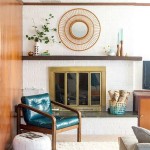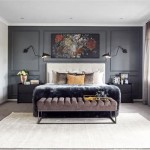Moroccan Style Interior Decorating
Moroccan interior design offers a rich tapestry of textures, colors, and patterns, creating spaces that evoke a sense of exotic beauty and tranquility. Influenced by Berber, Arabic, and European cultures, this style blends vibrant hues with intricate details, resulting in a uniquely captivating aesthetic.
One of the defining characteristics of Moroccan decor is the skillful use of color. Warm, earthy tones such as terracotta, ochre, and burnt sienna form the foundation, often contrasted with vibrant jewel tones like sapphire blue, emerald green, and ruby red. These rich colors are applied to walls, textiles, and decorative accessories, creating a sense of depth and warmth.
Textiles play a crucial role in Moroccan interiors. Elaborate handwoven rugs, plush cushions, and intricately embroidered tapestries add layers of texture and visual interest. These textiles often feature traditional Berber motifs, geometric patterns, and vibrant color combinations, contributing to the overall opulence of the space.
Ornate tilework is another hallmark of Moroccan design. Known as zellige, these intricately handcrafted tiles are typically made of terracotta or ceramic and feature complex geometric patterns. Zellige can be used to adorn walls, floors, fountains, and other architectural elements, adding a touch of artistry and craftsmanship to the space.
Intricate carvings are commonly found in Moroccan furniture and architectural details. These carvings often incorporate traditional Islamic art motifs, geometric patterns, and floral designs. Carved wooden screens, known as mashrabiya, are a popular feature, offering privacy while allowing light and air to filter through.
Lighting is an essential element in Moroccan decor, contributing to the overall ambiance. Ornate metal lanterns, often crafted from brass or copper, cast intricate shadows and create a warm, inviting glow. These lanterns can be hung from ceilings, placed on tables, or incorporated into wall sconces, adding a touch of magic and mystery to the space.
Furniture in Moroccan style often features low-slung seating arrangements, encouraging relaxation and conversation. Elaborately carved wooden tables, inlaid with mother-of-pearl or bone, serve as striking centerpieces. Comfortable cushions and ottomans, draped in rich textiles, complete the inviting atmosphere.
Arches are a prominent architectural feature in Moroccan design, adding a sense of grandeur and elegance. These arches can be incorporated into doorways, windows, and other structural elements, creating a sense of flow and continuity throughout the space.
Metalwork plays a significant role in Moroccan decor, adding a touch of shine and sophistication. Intricately crafted brass or copper trays, teapots, and decorative objects are often displayed prominently, showcasing the artistry of Moroccan metalworking traditions.
Plants are often incorporated into Moroccan interiors, adding a touch of natural beauty and freshness. Potted palms, succulents, and other drought-tolerant plants thrive in the warm, dry climate often associated with Moroccan-inspired spaces.
The use of natural materials is a key principle in Moroccan design. Wood, clay, stone, and leather are commonly used in furniture, flooring, and decorative accessories, creating a sense of authenticity and connection to the earth.
Creating a successful Moroccan-inspired interior involves carefully balancing the various elements. While the style is known for its richness and opulence, it's essential to avoid overcrowding the space. Thoughtful selection and placement of furniture, accessories, and decorative elements are crucial to achieving a harmonious and balanced look.
When incorporating Moroccan style, consider the specific function of the room. A Moroccan-inspired bedroom might feature a low-slung bed draped in luxurious textiles, while a living room might incorporate a seating area centered around a carved wooden table and a vibrant rug. The kitchen could feature zellige tile backsplashes and open shelving displaying hand-painted ceramics.
Adapting Moroccan style to modern sensibilities is also possible. One can incorporate key elements, such as Moroccan-inspired lighting or textiles, into a more contemporary setting. This allows for a subtle nod to the style without fully committing to a traditional Moroccan aesthetic.
Maintaining a sense of authenticity is important when decorating in the Moroccan style. Opting for handcrafted items, ethically sourced materials, and traditional techniques contributes to preserving the cultural heritage and supporting artisans.
Moroccan interior design offers a wealth of inspiration for creating spaces that are both visually stunning and deeply inviting. By skillfully blending color, texture, and pattern, one can transform any space into a haven of exotic beauty and tranquility, reflecting the rich cultural heritage of Morocco.

Moroccan Interior Design Ideas For Your Home Designcafe

Moroccan Interior Design Ideas For Your Home Designcafe

Moroccan Interior Design Influence Style Elements Study Com

Moroccan Decor Ideas For Home

Moroccan Style Interior Design

Moroccan Interior Design With Eva

10 Best Moroccan Decor Design Ideas In 2025 Inspired

Moroccan Style Interior Designs To Spruce Up Your Home

Moroccan Style Interior Design

Moroccan Interior Design Ideas For Your Home Designcafe







